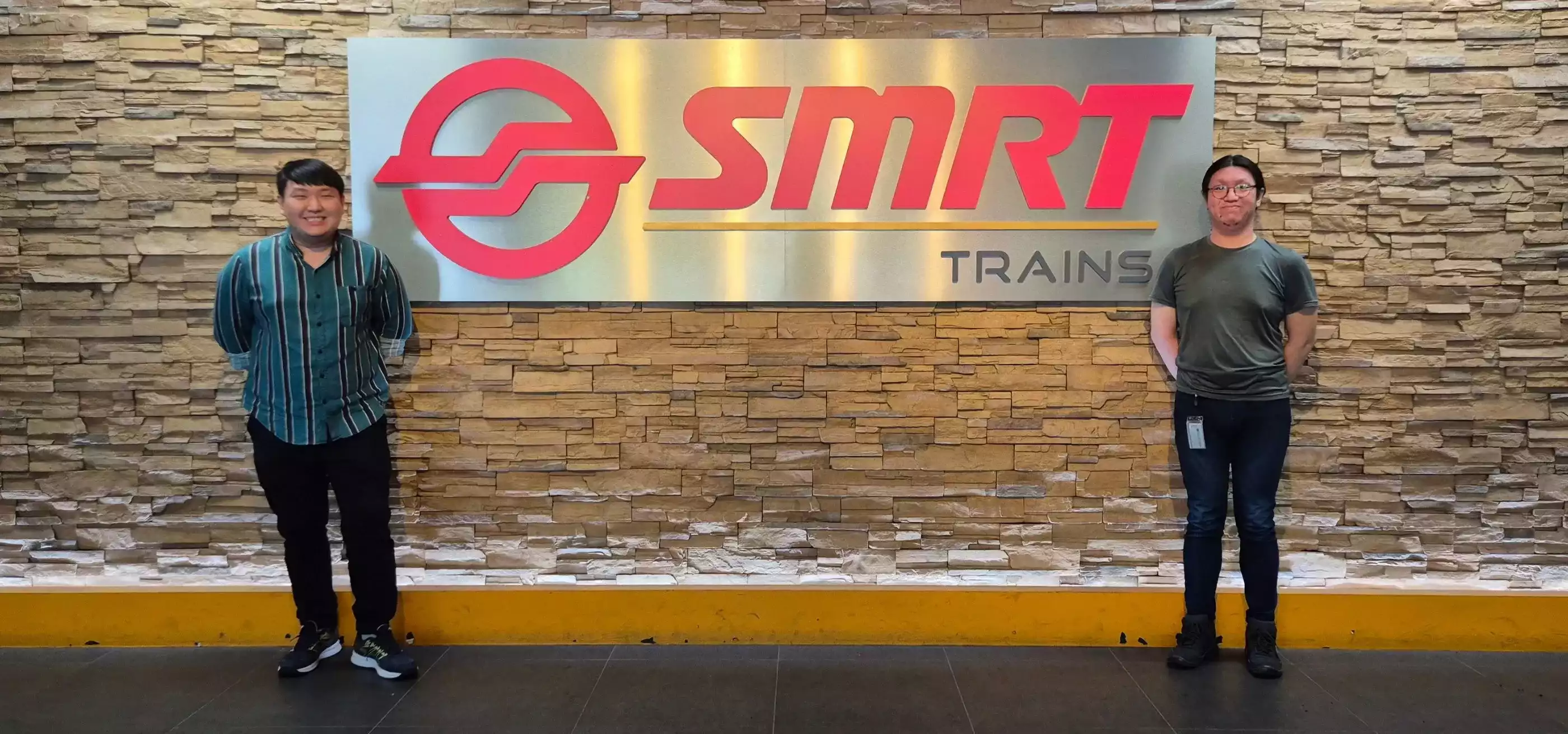When people think of SMRT, they picture trains whisking commuters efficiently across the island. But behind the scenes, SMRT also has a Learning Technologies department that transforms how staff are trained. Three DigiPen (Singapore) alumni — BFA in Digital Art and Animation graduates Dylan Loo and Bryan Choo, along with BS in Computer Science and Game Design graduate Joey Foo — are part of this innovative in-house team, leveraging technology to develop everything from highly realistic 3D train models to immersive virtual station environments.
Dylan and Bryan are 3D graphic artists while Joey works as a software programmer. Together with their team in SMRT’s Learning Technologies department, the trio develops virtual reality (VR) training applications that range from traditional flat-screen programs to cutting-edge mixed reality solutions.
Dylan focuses on the full asset development pipeline for environments and props which includes modeling, texturing, and optimization, while also working with set building and lighting in Unity. Bryan creates 3D assets optimized specifically for VR applications, using industry-standard software like Maya, Adobe Substance, and Unity to build environments and enhance visual appeal through lighting and post-processing effects.
Joey is responsible for the programming aspect, developing applications and simulations for staff. “My primary role involves developing training applications — these are usually virtual reality applications but may range from traditional flat-screen applications to mixed reality,” he explains. Joey also works closely with subject matter experts during the research phase of each project and ensures seamless deployment to stakeholders upon completion.
Though exciting, working on VR projects comes with distinct challenges. For one, there are numerous technicalities and nuances involved that the graduates must depict accurately. “Correctly depicting processes such as train maintenance in virtual reality requires knowledge of the steps involved. Learning this on the fly can be challenging,” Dylan explains. He overcomes this through thorough and comprehensive research, ongoing consultation with stakeholders, and hands-on reconnaissance sessions.
Another challenge lies in designing simulations that accommodate a diverse range of users and demographics. Joey explains that the projects they develop have to be accessible for fresh graduates, senior staff, and experienced trainers alike. To address this, the team employs a rigorous process of iterative development, testing, and establishing consistent user interface and interaction patterns across all the different virtual reality training applications, ensuring an intuitive and user-friendly experience for all.
All three graduates credit their DigiPen (Singapore) education with preparing them for their current roles. Bryan reflects that “DigiPen provided me with valuable interdisciplinary experience, particularly through collaborative projects involving both designers and programmers. This exposure to various facets of game development closely parallels my current responsibilities at SMRT where I collaborate extensively with programmers to develop and optimize virtual reality training applications. The strong foundation I gained at DigiPen has enhanced my understanding of team dynamics and has strengthened my effectiveness as an artist within a multidisciplinary environment.”
Joey echoes this sentiment, highlighting how the project-based coursework has helped him develop and hone essential soft skills such as project management, planning, and conflict resolution. He also learned the importance of establishing efficient workflows and utilising collaboration tools effectively.
These traits have also been noticed by the graduates’ supervisors. Senior software programmer, Meng Ruoshan notes, “We have worked with several VR programmers from DigiPen (Singapore) and their contributions have been invaluable. Their strong foundation in game design and interactive systems enables them to approach challenges with creativity and technical precision, and their interdisciplinary training really shows in the way they collaborate across teams.” She adds, “They have helped develop engaging and innovative VR experiences that extends beyond traditional simulations, and their ability to rapidly prototype and iterate stands out.”
Wong Yu Lian, SMRT Manager and Digital Learning Media Designer, shares similar praise for the artists: “What stands out most when working with DigiPen (Singapore) alumni is their ability to balance visual quality with technical performance requirements — ensuring that VR experiences run smoothly while still looking polished and professional. Furthermore, they have a strong understanding of 3D graphic development, which makes collaboration on VR and simulation projects efficient and rewarding.”
When asked what they enjoy most about working at SMRT, the graduates are quick to point out the positive work culture, supportive environment, and abundant opportunities for professional growth and learning. More importantly, the work itself carries deep meaning and they find profound purpose in their work. Bryan sums it up by saying: “We contribute to the SMRT Institute, which leads training for the entire SMRT organization. I feel honored that my contributions play a meaningful role in the training of staff through our VR simulations.”
